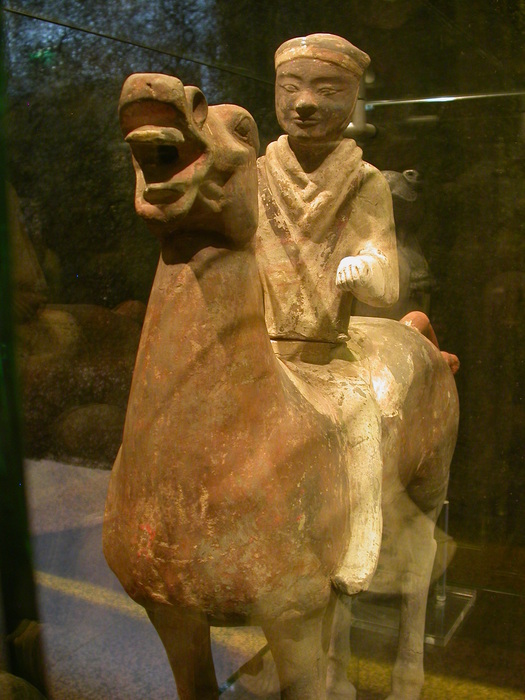
More common than the life-sized entourage of the first emperor were statues like this one, at about 1/5 scale. This one is from the burial site of the Emperor Gaodi, founder of the Han Dynasty of emporers.
Shortly after we got back from the States, we took a trip to Assen with our friends Robbert and Sarah. The Drents museum in Assen hosts some of the best-preserved bog bodies ever found, and consequently is on good terms with many other museums around the world. Thus it came to host the Terra Cotta Army.
The Terra Cotta Army was constructed on the orders of Qin Shi Huang, the First Emperor of China. In total, the army consists of an estimated 8000 life-sized soldiers, officials, acrobats, strongmen, and musicians, as well as 130 chariots and 520 horses. Their purpose was to accompany him to the afterlife, presumably so he could conquor whatever he found there as he had in this life. He was the first emperor of a unified China, which encompassed all the inhabited land known to him. He believed he ruled the entire world. It is no wonder that he didn't want a little thing like dying to get in the way of further expansion. Evidence suggests that 700,000 people were involved in the construction of the terra cotta figures, the chambers to house them, and the associated buildings. Corroded handcuffs and chains attest that much of this labor was forced, sometimes as punishment for crimes or repayment of debt. Skeletons are found in some chambers: those who constructed the chamber sealed inside in order to keep the exact layout a secret. According to the historian Sima Qian, writing 100 years later, this layout included palaces, scenic towers, and 100 rivers of mercury. The remains of the massive project speak of genius and madness, a time that was both pivotal and terrible in China's long history.

More common than the life-sized entourage of the first emperor were statues like this one, at about 1/5 scale. This one is from the burial site of the Emperor Gaodi, founder of the Han Dynasty of emporers.
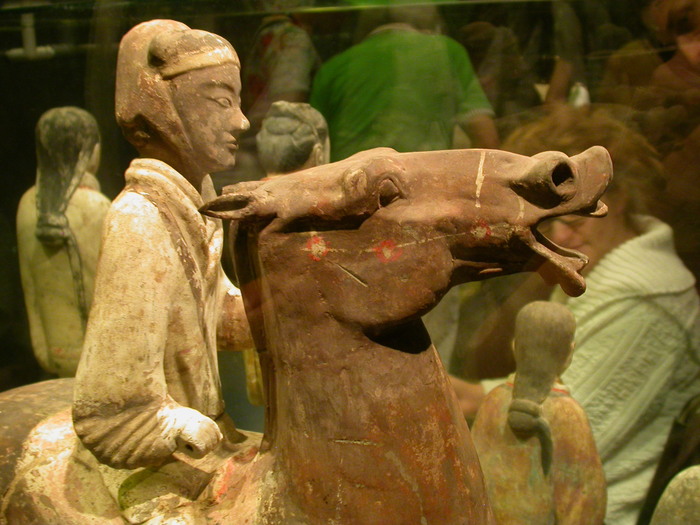
The First Emporer failed to make any provisions for the rule of China after his death. A rapid succession of sons and officials from his court ruled China after his death, while the empire crumbled. Liu Bang led an army to wrest control away from the grandson of the First Emporer, only four years after the First Emporer's death, to become the Emporer Gaozu (Gaodi). He was a far gentler ruler than his predecessor.
The figures in the background are among the first images of women in China, created during the Han Dynasty. Most likely they represent servants.
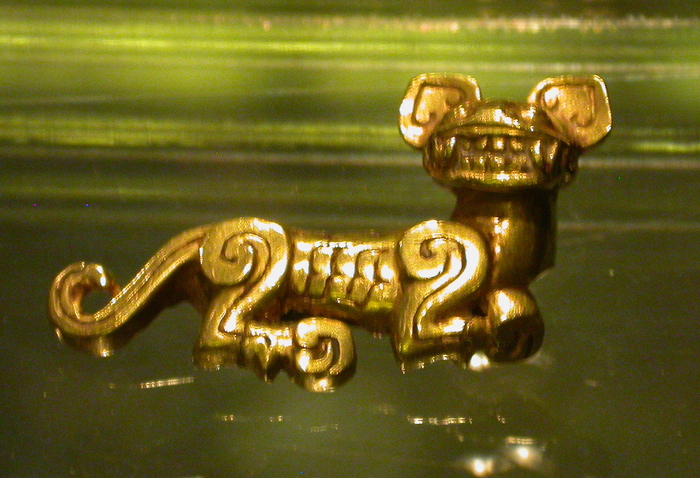
A gold tiger from the Han Dynasty (between 200 BC and 9BC). The style, though, is of the earlier Warring States period. Perhaps in its time this was an imitation antique
.
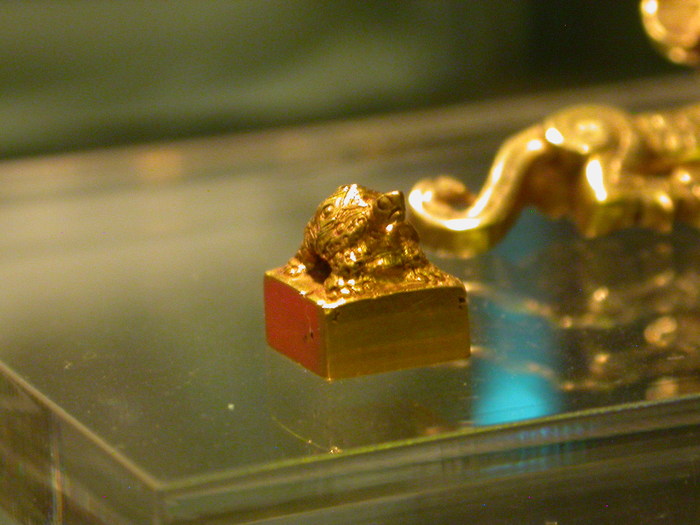
It is kept company by a tiny gold turtle: an ornament on an official seal. It is no longer certain if this was a state seal or the seal for an individual.
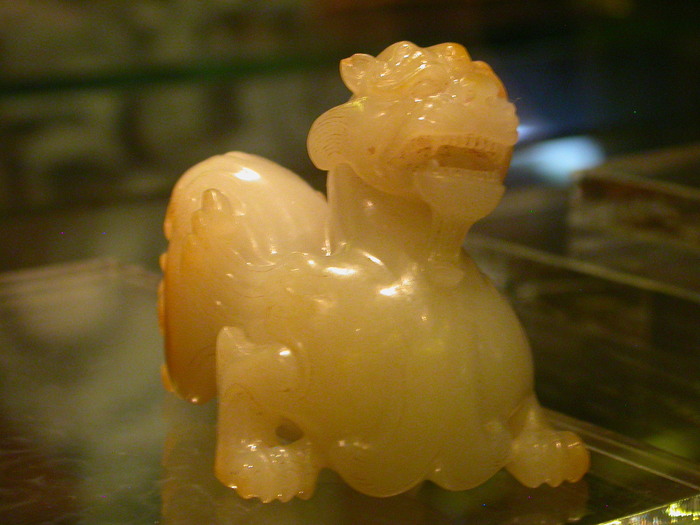
The guidebook identifies this as a winged lion
, but it looks very much like a dragon to me. The faces of many Chinese dragons resemble the faces of the giant softshelled turtles that live in the rivers and marshes of China. They can live for hundreds of years, and must have seemed quite magical to the ancient people of China.
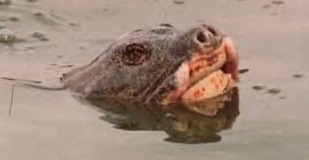
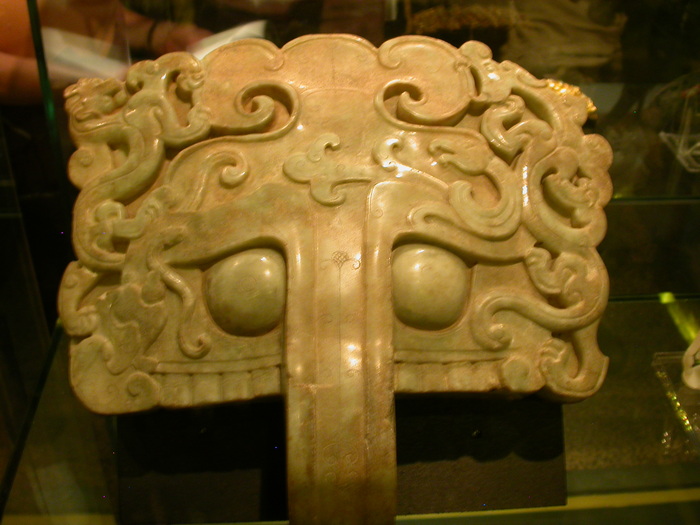
A door knocker from the Han Dynasty. The knocker is decorated with the guardians of the four cardinal directions. You can make out the dragon (green dragon) to the right, and the tiger (white tiger) to the left. Allegedly there's a black warrior and a red phoenix there somewhere, too.
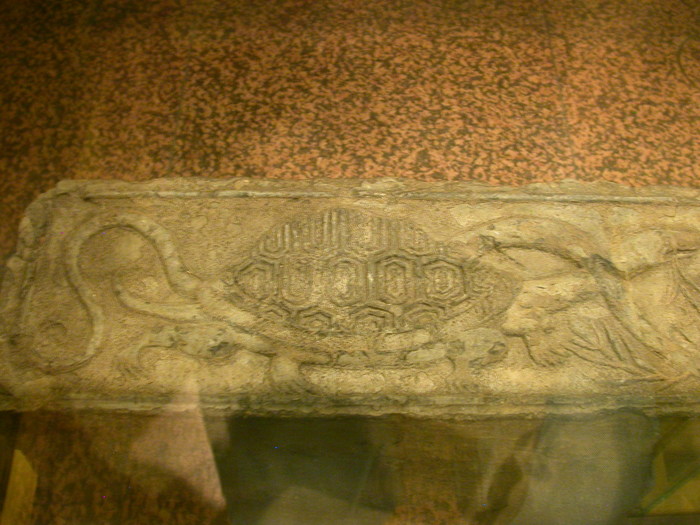
The guardian of the north, the black warrior
- a turtle and a snake. The word for tortise
was taboo, so the northern constellation was referred to as the black warrior
. The complete image of the black warrior is the snake wound around the tortise.
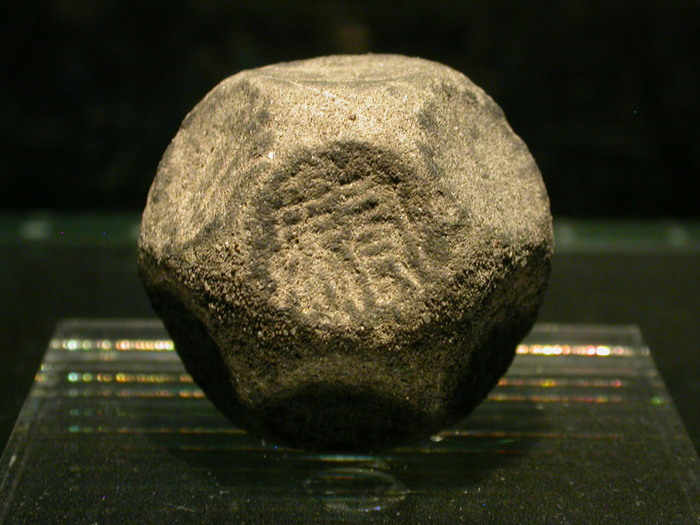
A die from the time of the First Emporer. This sort of die was used in a dice game called bo
, but the rules of the game have been lost over time.
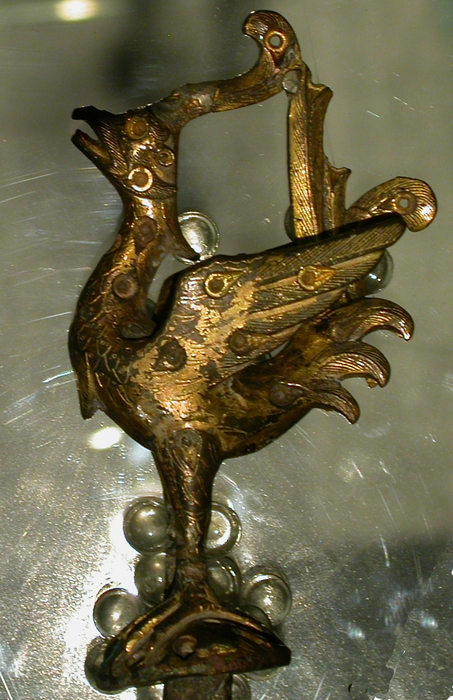
A gilded bronze phoenix, found just outisde the mausoleum of the First Emporer. It was probably once laid with jewels.
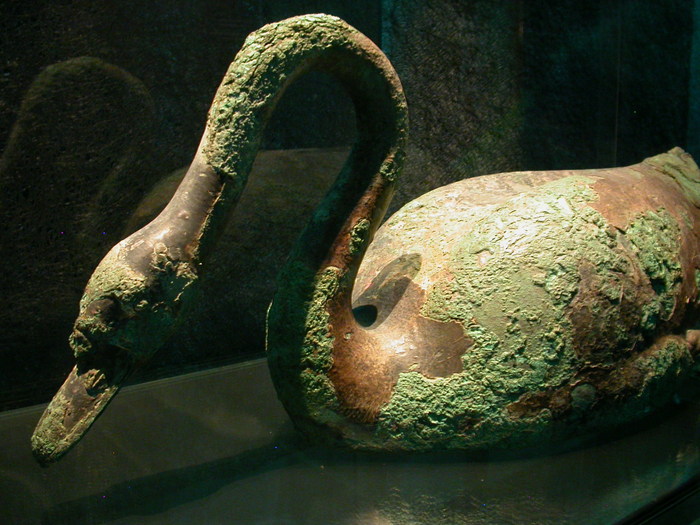
A life-sized bronze swan. This sculpture and other water birds were in the offering pits surrounding the tomb of the First Emporer. The total buiral site covered nearly 14,000 acres (56km2).
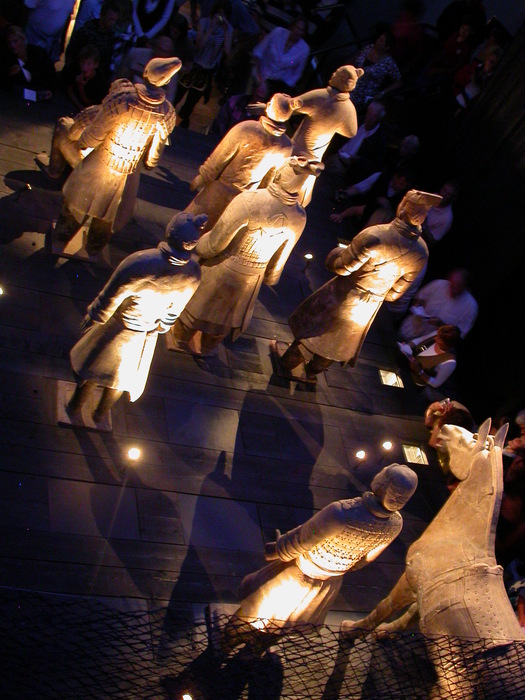
The first view of the Army is from a wooden walkway above. Naturally, only a few of the 8000 soldiers are on display here. The figures were not made as single pieces, but were assembled from separately-made heads, arms, legs, and torsos. The parts are inscribed with the mark of the shop which made them, thus it can be seen that they were made assembly-line style: one shop making legs, another arms, etc. It can also be seen that shops which normally made pots and roofing tiles for household use were appropriated for construction of the army. The pieces were mass produced, but then modified to reflect individual characteristics. Eight different molds were used for the heads, and individual features added later.
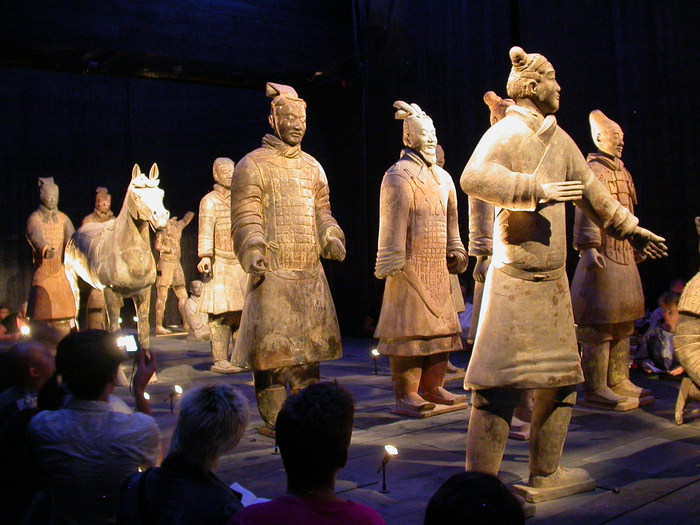
A view of the Army from the front. The frontmost figure is an archer. He wears no armor, in order to move quickly. The figure to the far right carried no weapons. The second row consists of an armed warrior (right, mostly eclipsed by the archer in this photo), an officer (left), and a general (center). The figures are generally between 6 and 6½ feet tall, with the higher-ranking figures being portrayed as taller. Clothing, particularly the sashes around the neck, and head gear are also thought to indicate rank. Behind the officers is a charioteer, though the horse is a saddled calvalry horse. The calvary rider is to the right, with a flared tunic suitable for riding. His left hand once held a bow.
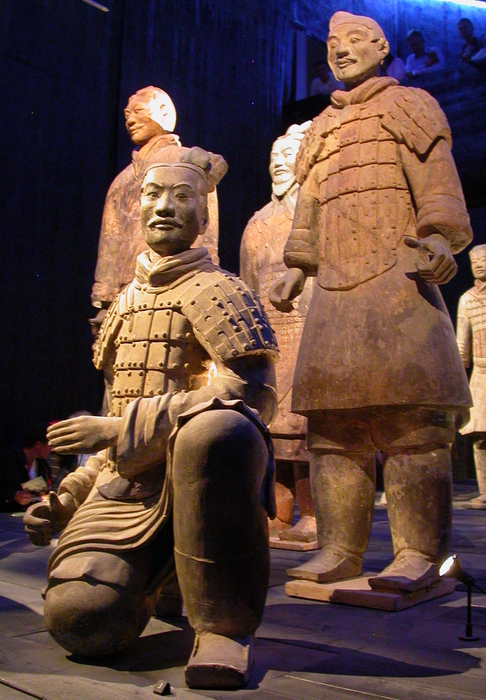
An archer such as this one was the only statue to have survived intact (possibly this is the very same archer, but the guide book doesn't mention it). The others were damaged within 5 years of their creation, when the general Xiang Yu looted the necropolis and set it on fire. The offering chambers were lined with wood, so there was plenty to burn. The terra cotta army had been equipped with real weapons, so the loot was quite useful to the rogue general. While many of the statues were broken, most of the pieces have survived, and the army is being gradually pieced back together. The chambers containing the army are now enclosed in a building, which can be toured.
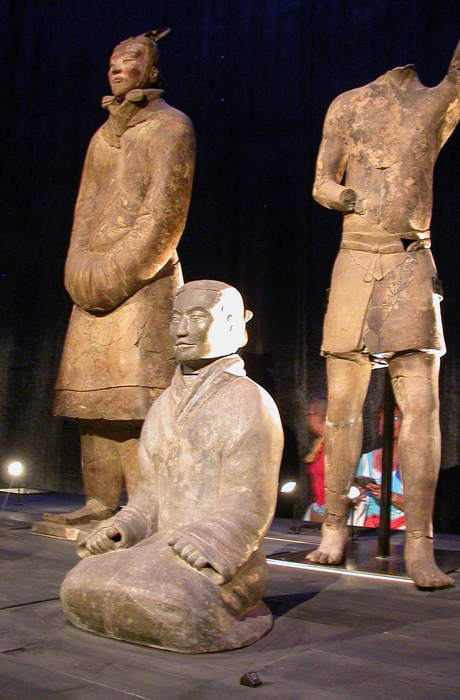
This kneeling figure is not the palace Buddha (in fact, the first Buddhist missionaries would've just reached China about this time), but a groomsman. The figure with its arm raised behind him is an acrobat, and the other is an official, with his hands hidden in his sleeves.
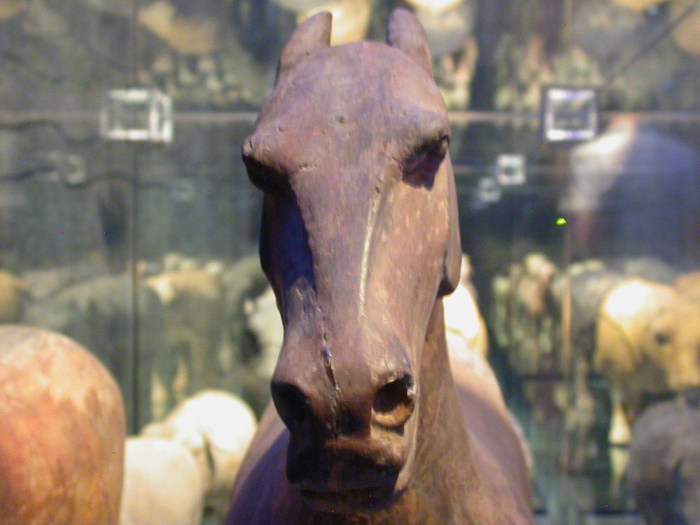
The emporers of the Han Dynasty also had terra cotta figures prepared to accompany them into the afterlife, but theirs were in miniature: generally around 1/5 size.
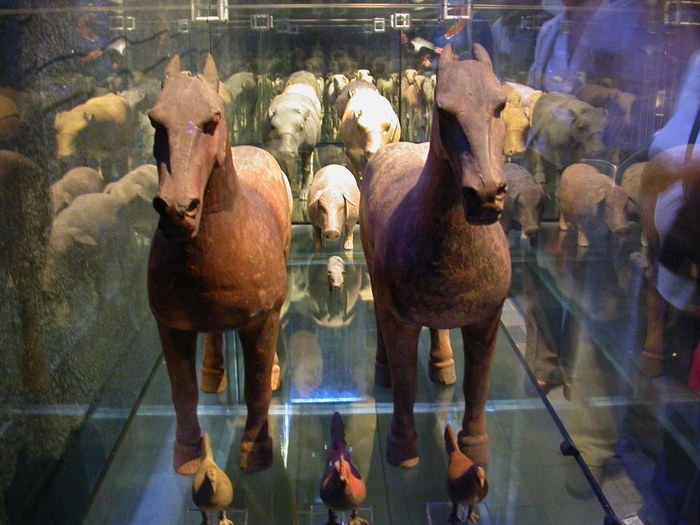
Like the first emporer, they did not only bring military figures, but also livestock, tools, and other necessities of life.
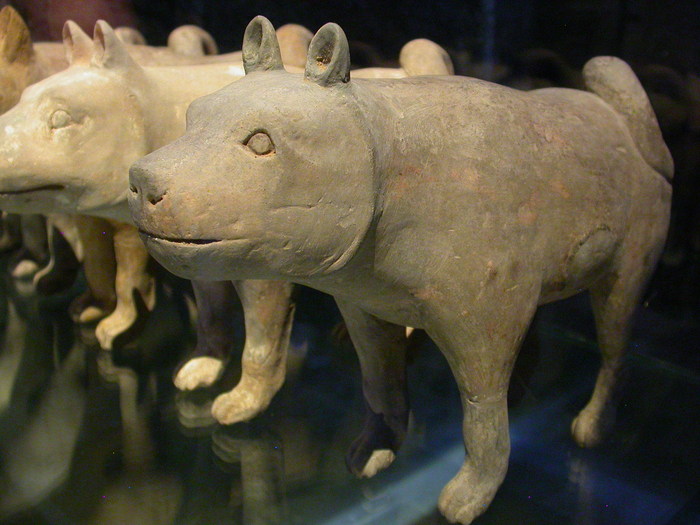
These figures provide an interesting snapshot of the evolution of our domestic breeds. This guy does indeed look like something between a wolf and several of the modern Chinese breeds.
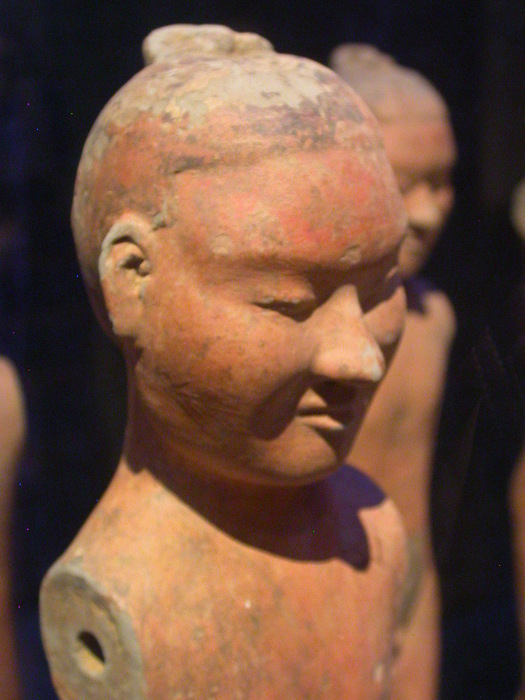
The indivudualized faces were also kept, albeit in minature. Many of these figures had moveable wooden arms and wore silk clothes. The wood and silk decomposed, leaving only the terra cotta. In many cases, though, the paint survived.
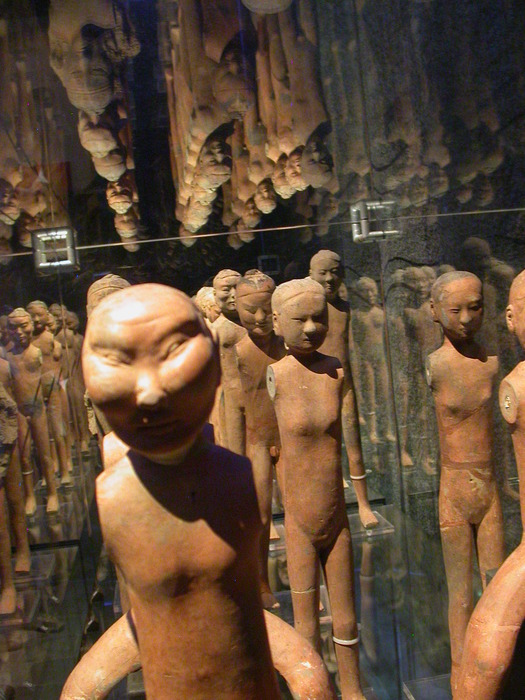
One gets the very strong impression of a group of individuals, with all their perfections and imperfections. Some of the figures rode wooden horses, but these have also been lost over time.
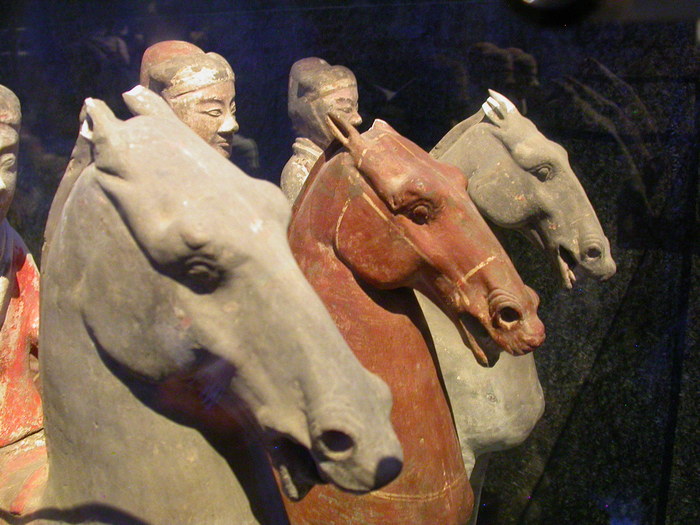
The terra cotta horses fared better, some even still keeping their paint. There is a sense of anticipation, as if the calvery is about to march.
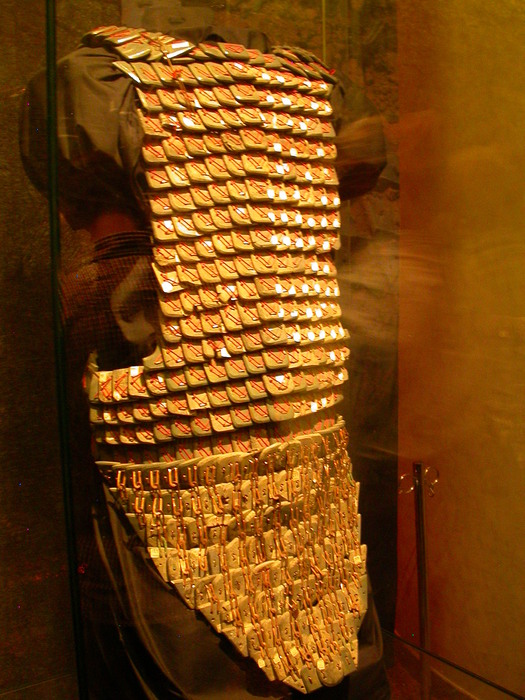
Thousands of small limestone tiles were held together by copper wires (which had melted in the fire) to make replicas of armor, harnesses, and helmets. The armor weighs about 18 kilos, making it rather heavy to have been worn by a living person, but stranger things have happened. I don't know if this armor was only for the dead, ceramonial, or useful.